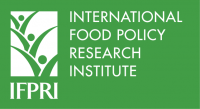
Studies have shown that when women own or control household assets, they can improve the well-being of both themselves and their families. But in many developing countries, men own and control the majority of assets. Without a fair share of ownership, women have little or no control over such decisions as what crops to plant or how and when to sell produce of livestock. Ownership and control of assets can also impact who is eligible to participate in and benefit from development programs. Improving gender equity in asset ownership, particularly for agricultural assets, is thus an important development priority.
IFPRI’s Gender, Agriculture, and Assets Project (GAAP) recently worked with eight agricultural development projects in Africa and South Asia to include aspects of gendered asset ownership in their monitoring and evaluation plans. (For a full description of each project, read “Gender, Assets, and Agricultural Development: Lessons from Eight Projects.” ) While the programs varied in terms of their set-up and their treatment of asset- and gender-related factors, several findings were consistent throughout.
All of the projects resulted in increases in asset ownership at the household level; however, only half specifically increased women’s control or ownership. Only one project, the Helen Keller International Enhanced Homestead Food Production project in Burkina Faso, contributed to an actual reduction in the gender asset gap. Similarly, while many of the projects increased women’s incomes, these increases were not consistent with increases at the household level and what was witnessed for male household members. This suggests that even with higher incomes, women still found it difficult to assert relative control over those incomes.
But there is some good news. GAAP’s findings clearly point to the fact that agricultural development projects can be made to further benefit women – if the importance of assets and gendered ownership are recognized and addressed in project designs. The study also provided valuable insights into how men and women experience development projects differently and how this information can be used in the design and evaluation of future projects. Finally, GAAP’s methods have contributed to a greater understanding of how to collect and measure data related to gender, assets, and property rights. This knowledge contributed to the development of the Women’s Empowerment in Agriculture Index (WEAI). It measures the roles and extent of women’s engagement in the agriculture sector in five domains: (1) decisions about agricultural production, (2) access to and decision-making power over productive resources, (3) control over use of income, (4) leadership in the community, and (5) time use. It also measures women’s empowerment relative to men within their households. For more information on the WEAI, visit the project webpage.
